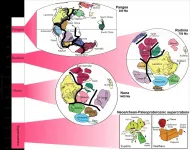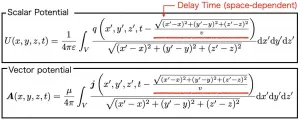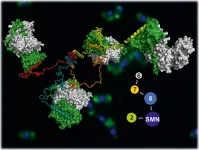(Press-News.org) The process of fabricating materials is complicated, time-consuming and costly. Too much of one material, or too little, can create problems with the product, forcing the design process to begin again. Advancements in the design process are needed to reduce the cost and time it takes to produce materials with targeted properties.
Funded by the National Science Foundation (NSF), researchers at Texas A&M University are using advanced computational and machine-learning techniques to create a framework capable of optimizing the process of developing materials, cutting time and costs.
"Our general focus is working on materials design by considering process-structure-property relationships to produce materials with targeted properties," said Dr. Douglas Allaire, associate professor in the J. Mike Walker '66 Department of Mechanical Engineering. "In our work, we demonstrate a microstructure sensitive design of alloys with a Bayesian optimization framework capable of exploiting multiple information sources."
Bayesian optimization-based frameworks use prior knowledge as models to predict outcomes. In the past, researchers have used this framework in correlation with a single information source (simulation or experiment). If that method failed, the process starts again with the hopes of making the right adjustments based on this model.
The researchers have rejected this notion and instead believe that many information sources can be pulled using a Bayesian framework to develop a more complete picture of underlying processes. They have combined multiple information sources to create materials with targeted properties more efficiently by looking at data in its entirety rather than its parts.
"What we think, that is very different, is that you can have many different potential models or information sources," said Dr. Raymundo Arróyave, professor in the Department of Materials Science and Engineering. "There are many ways to understand/model the behavior of materials, either through experiments or simulations. Our idea is to combine all of these different models into a single, 'fused' model that combines the strengths of all the other models while reducing their individual weaknesses."
Their research, titled "Efficiently exploiting process-structure-property relationships in material design by multi-information source fusion," was recently published in Vol. 26 of the Acta Materialia journal.
"These model chains have historically not considered the breadth of available information sources," said Allaire. "They consider single models along the chain from process, through structure, to property. As a result, they are not as efficient or accurate as they could be."
The researchers are currently testing this framework by developing dual-phase steels typically used on automobile frames. Dual-phase steels are made out of two phases with very different and complementary properties.
"There are two phases; the martensite phase makes this particular steel very strong," said Arróyave. "The ferritic phase is softer and makes the steel more compliant and amenable to deformation. With only martensitic microstructures, these materials are strong, but they break easily. However, if you combine the strength of martensite with the ductility of ferrite, you can make steels that are very strong, can absorb energy during impact and that can be fabricated into complex shapes such as car frames."
Using the method developed in this work, the goal is to develop a framework that more precisely and effectively predicts the needed composition and processing (recipe) for a specific design. In turn, this decreases the number of simulations and experiments required, drastically reducing costs.
"The knowledge that we gain about the material design process as a whole using our framework is much greater than the sum of all information extracted from individual models or experimental techniques," said Dr. Ankit Srivastava, assistant professor for the materials science and engineering department. "The framework allows researchers to efficiently learn as they go, as it not just collects and fuses information from multiple models/experiments but it also tells them which information source i.e., a particular model or experiment provides them the best value for their money or time, which really enhances the decision-making process."
In the future, they hope their framework is widely used when attempting tasks that involve integrated computational materials design.
"Our hope is that by presenting these model fusion-based Bayesian optimization capabilities, we will make the search process for new materials more efficient and accurate," said Allaire. "We want any researcher to use the models that they have available to them without worrying as much about how to integrate the models into their own modeling chain because our Bayesian optimization framework handles that integration for them."
INFORMATION:
Graduate students who assisted with this research include Danial Khatamsaz from the mechanical engineering department and Abhilash Molkeri, Richard Couperthwaite and Jaylen James from the materials science and engineering department.
Curtin University research has uncovered the first solid clues about the very beginning of the supercontinent cycle of Earth, finding it was kick-started two billion years ago.
Detailed in a paper published in Geology, a team of researchers from Curtin's Earth Dynamics Research Group found that plate tectonics operated differently before two billion years ago, and the 600 million years supercontinent cycle likely only started during the second half of Earth's life.
Lead researcher Dr Yebo Liu from Curtin's School of Earth and Planetary Sciences said that the shift in plate tectonics marked a regime change in the Earth System.
"This regime change impacted on the eventual emergence of complex life and even ...
The talented athletes are there. The cheering fans are there. But the media? It's nowhere to be found.
This is the reality of women's sports, which continue to be almost entirely excluded from television news and sports highlights shows, according to a USC/Purdue University study published on March 24th in Communication & Sport.
The survey of men's and women's sports news coverage has been conducted every five years since 1989. In the latest study, researchers found that 95% of total television coverage as well as the ESPN sports highlights show SportsCenter focused on men's sports in 2019. They saw a similar lopsidedness ...
A research group at the RIKEN Center for Computational Science (R-CCS) has found that glycans--sugar molecules--play an important role in the structural changes that take place when the virus which causes COVID-19 invades human cells. Their discovery, which was based on supercomputer-based simulations, could contribute to the molecular design of drugs for the prevention and treatment of COVID-19. The research was published in the Biophysical Journal.
When SARS-CoV-2--the coronavirus that causes COVID-19--invades a human cell, a spike protein on its surface binds to an enzyme called ACE2 on the surface of the cell. The ...
Osaka, Japan - Scientists from the Division of Sustainable Energy and Environmental Engineering at Osaka University employed deep learning artificial intelligence to improve mobile mixed reality generation. They found that occluding objects recognized by the algorithm could be dynamically removed using a video game engine. This work may lead to a revolution in green architecture and city revitalization.
Mixed reality (MR) is a type of visual augmentation in which real-time images of existing objects or landscapes can be digitally altered. As anyone who has played Pokémon Go! or similar games knows, looking at a smartphone ...
Osaka, Japan - Most of the devices used in our daily lives are operated and controlled by electricity. From the standpoint of safety and the tight supply and demand of electricity, circuit design that satisfies low electromagnetic noise and power saving is becoming increasingly important.
In an electric circuit, electric signals transmit inside the conductor, and electromagnetic fields radiate outside the conductor. Furthermore, the electromagnetic field propagates through the air and is converted into signals for itself and other circuits, which leads to electromagnetic noise. Now, a research team at Osaka University has formulated a numerical method ...
At the bottom of the world, there's a small island about four kilometers off the coast of Antarctica. In summer, temperatures climb to freezing with uninterrupted daylight for two months. In winter, they fall to minus 40 degrees Celsius without a single sunrise for two months. It is isolated and desolate, uninhabitable to all humans -- except for the Japanese Antarctic Research Expedition (JARE). Almost every year since 1956, a JARE team winters over on the island, staying in Syowa Station, from February to January to conduct various research projects. From 2004 to 2014, however, they were also research subjects themselves.
As part of a joint project between the National Institute of Polar Research at the Research Organization of Information and Systems ...
Materials science likes to take nature and the special properties of living beings that could potentially be transferred to materials as a model. A research team led by chemist Professor Andreas Walther of Johannes Gutenberg University Mainz (JGU) has succeeded in endowing materials with a bioinspired property: Wafer-thin stiff nanopaper instantly becomes soft and elastic at the push of a button. "We have equipped the material with a mechanism so that the strength and stiffness can be modulated via an electrical switch," explained Walther. As soon as an electric current is applied, the nanopaper becomes soft; when the current flow stops, it regains its strength. From an application perspective, this switchability could be interesting for damping ...
Tokyo, Japan - Scientists from the Graduate School of Information Science and Technology at The University of Tokyo calculated the efficiency of the sensory network that bacteria use to move towards food and found it to be optimal from an information theory standpoint. This work may lead to a better understanding of bacterial behavior and their sensory networks.
Despite being single-celled organisms, bacteria such as E. Coli can perform some impressive feats of sensing and adaptation in constantly changing environmental conditions. For example, these bacteria can sense the presence of a chemical ...
Imbued with special electric, mechanical and other physical properties due to their tiny size, nanofibers are considered leading-edge technology in biomedical engineering, clean energy and water quality control, among others. Now, researchers in Italy and UK have developed an automatic process to assess nanofiber fabrication quality, producing 30% more accurate results than currently used techniques.
Details were published on January 2021 in IEEE/CAA Journal of Automatica Sinica, a joint publication of the IEEE and the Chinese Association of Automation.
"In recent years, nanostructured materials have gained continuously growing interest both in scientific and industrial contexts, because of their research appeal and versatile applications," ...
SMN or in full Survival Motor Neuron: Professor Utz Fischer has been analyzing this protein and the large molecular complex of the same name, of which SMN is one of the building blocks, for many years. He holds the Chair of the Department of Biochemistry at the Julius-Maximilian's University of Würzburg (JMU), and he first discovered the molecule during his search for the root cause of spinal muscular atrophy. As scientists found out a few years ago, this disease is caused by a lack of the SNM complex.
The work group around Prof. Fischer has now succeeded in presenting a first three-dimensional model of the ...





